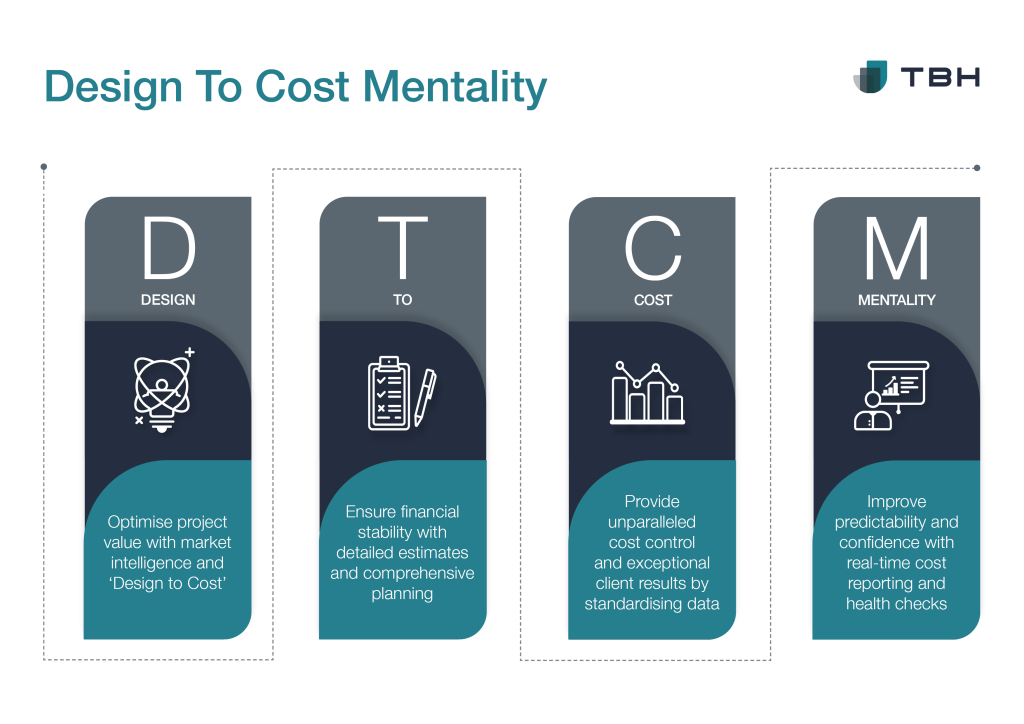Throughout Australia, there has never been a time when infrastructure construction activity has been so strong in all states and territories as now.
Infrastructure Australia’s 2023 Market Capacity Report shows that the average cost of major projects in Victoria has increased by 41% since 2014, while South Australia is spending 33% more on infrastructure than in the past two decades. Meanwhile NSW, Queensland, and the Northern Territory are also set to experience unprecedented growth in the next three years, with investment up to three times higher than the previous three years. This surge in activity is being driven by government spending, population growth, and urbanisation trends.
While increased investment in infrastructure is a positive sign for the economy, it comes burdened with unique challenges that are impacting the industry’s profitability and efficiency. To keep on top of changing material prices, labour shortages, fuel hikes, insolvency, and international conflicts, it has never been more important to engage a Quantity Surveyor (QS) at the project onset.
Quantity Surveyors play a crucial role in ensuring the financial viability and efficiency of Australia’s infrastructure projects from inception to completion. Their involvement ensures that projects are completed within budget, on time, and to the required quality standards. Callum Agnew, Director, and professional Quantity Surveyor at TBH, offers valuable QS insights into how the industry can ensure accurate cost estimation, effective budget control, and efficient procurement processes, at a time where the industry is changing at an unprecedented rate.
Addressing the Skills Shortage in the Construction Industry
According to a recent report by Mordor Intelligence, Australia’s construction industry is expected to grow from USD 172.29 billion in 2024 to over USD 200 billion by 2029, at a compound annual growth rate (CAGR) of 5%. However, this growth comes with significant risks. The industry needs around half a million additional workers by 2026 to meet projected growth and recruitment requirements but as of now, is only meeting half of the growth rate necessary to offset current losses (from retirement and natural attrition).
Early in the pandemic, the Australian labour market underwent sweeping changes, with thousands of jobs lost across all industries. This blow significantly set back construction. Droves of vital workers exited the workforce at once, with many migrating back to their home countries and never returning. This exodus created a substantial gap in the labour market, with important implications for the stability and future of the industry. Adding to the challenge, a significant portion of the current workforce is approaching retirement age, further exacerbating the shortage.
Given the scale of change occurring (simultaneously with inflation and material shortages), Infrastructure Australia has warned of the serious ramifications on timelines, costs, and the ability of the industry to meet demand – putting $230bn worth of large-scale infrastructure projects at risk.
Impact of Union Wage Agreements on Project Budgets
In April 2024, Master Builders Australia conducted a survey among its members, revealing that 66 percent identified sourcing workers as the single greatest challenge facing the building and construction industry at present.
When there is a shortage of skilled workers, the law of supply and demand often dictates that wages rise as companies compete to attract the limited available talent. Due to competition for skilled workers, wages for construction vacancies have risen by 80% since late 2019, rapidly outpacing those of the general economy as shown in the Wage Price Index (WPI).
Unions have played a big role in securing these pay increases, with deals negotiated by collectives locking in not only better wages, but also more favourable provisions for rostered days off, leave loading, and allowances like living away from home and travel allowances.
While these increases undoubtedly benefit workers (at least in the short run), they also make it difficult for many contractors to hire the people they need at affordable rates.
Consider a recent agreement for Queensland workers, which includes a 5.9% pay rise backdated to July 1, 2023. As a result, in 2024 Level Three Construction Workers saw their hourly wage increase to $54 an hour, or $3,991 for a 50-hour week with two hours of double time each day.
These contract negotiations will of course drive Queensland construction costs up – potentially as much as 20-30% more than other states putting contractors with fixed price contracts at risk of being unable to recruit workers at a reasonable price and incurring penalties or financial troubles trying to meet project timelines.
This also means large government-funded initiatives are taking longer to complete and costing more than expected, leading to more frequent contract disputes and renegotiations, as original estimates become unrealistic.
More risk than reward
With the cost of major infrastructure projects increasing by more than 27% since 2021, construction profits have fallen from 3% to under 1%, and liquidity has plummeted from 15% to under 5%. This predicament has left many contractors busy with projects – but financially strained – since they are unable to pass these unexpected costs onto clients under the fixed terms of their contracts.
Due to an industry focus on bidding the lowest price at the tender box, and the fact contractors often operate under fixed-price contracts that lock in the cost of a project at the outset – many commercial contractors are doing it tough right now, completing fixed-price contracts that were won years ago when their tendered costs were estimated well below the true cost of the project today.
Unsurprisingly, this situation of unforeseen cost increases has led to more frequent project delays and large claims and disputes towards the end of projects seeking additional time or money from clients. Sadly, it has also led to the industry facing a disproportionate share of bankruptcies, with insolvencies in the sector increasing by 140% since 2022.
The Productivity Conundrum
Diminishing productivity will magnify the impacts of the labour shortage – and already productivity in the construction sector has not improved for over 30 years.
Historically, many publicly funded projects relied on a ‘just-in-time’ recruiting model. That meant when a project was looking like it would take longer than expected, they would just find and throw more people at it. That model is no longer an option as it is now unaffordable – and this presents a challenge for those involved in project delivery.
For instance, if a project is situated in a region known for heavy rains, and the cost analysis does not account for these risks, the project can face delays and cost overruns when these weather events (ever more frequent due to climate change) occur. If heavy rains cause the project to be held up for two months, the schedule will fall behind, and major cost blowouts will occur due to idle cranes and other equipment not being used.
Workers however will still need to be paid even when they are not actively working, extending timelines, and increasing costs due to decreased productivity. When holdups like this occur, union agreements, hiked wages and supply chain problems collide, and expenses can escalate quickly – leading to budget blowouts and delays.
Consequently, agreements and wage increases are also having a big impact on productivity on projects.
There is no easy answer to unlocking that problem, because of course workers deserve fair pay and conditions too. One might try to source less expensive employees from abroad – and traditionally, this has occurred in the past, especially from Vietnam and Malaysia. However, current migration settings only allow about 3% of migrants to work in the building and construction industry, which demonstrates a mismatch between the skills of many incoming migrants and what our industry needs right now. 2023 Skill Select data indicates that a significant number of expressions of interest (EOIs) from migrant tradespeople do not even proceed to the application stage for skilled visas in Australia. According to the data, only about one in five tradespeople who expressed interest were invited to apply for a visa.
Also, we are in the middle of an unprecedented cost-of-living crisis and housing shortage, putting the rental market under significant pressure, which will make it difficult for migrants to find affordable housing.
Master Builders Australia has recommended that the government develop a Construction Skills Pathway visa to address the labour shortages in the building and construction industry. This proposed visa would be similar to those in Canada, New Zealand, and the UK, offering skilled migrants a streamlined, cost-effective, and fast visa process. The visa would also allow mutual recognition of trade qualifications that are comparable to or better than Australian standards, facilitating easier integration of skilled workers from other jurisdictions.
Outside of recruiting more workers from outside of Australia, overhauling the apprentice system and investing in support programs – a key to unlocking the productivity problem might be found in technology. Solutions such as Building Information Modelling (BIM) and digital twins can help improve planning, reduce errors, and increase collaboration, while robotics and automated equipment can also be used to help workers by taking on repetitive or heavy tasks, freeing them up for higher-value activities.
Electoral Cycle Influence
While Australia is well versed in terms of collaboration between the public and private sectors to deliver infrastructure projects, the electoral cycle can and does often complicate things.
What we often see is that at the start of a political term, policymakers want to initiate and announce new infrastructure projects quickly to demonstrate progress and secure voter support. Consequently, these projects often get ‘rushed through the gate,’ without proper design development, analysis or understanding of potential risks.
As the term progresses and the next election approaches, we often see a noticeable shift in focus towards maintaining the status quo and avoiding controversial decisions or further investments. This shift can result in an under-management of risk, leaving projects vulnerable. This tendency is particularly evident in the final year of the term when the prospect of a change in government becomes more pronounced. The under-management of risk throughout these rushed through project lifecycles inevitably leads to foreseeable and often avoidable problems.
Going Back to Basics
One reason why many large-scale infrastructure projects end up costing more than expected, is how they are managed right from the start. If there is one thing that the past few years has taught us, it is to expect the unexpected. This should also extend to project management.
Proper risk analysis in a cost-based system which considers all moving parts from the bottom up, to prevent these kinds of situations from occurring. All these factors should be included in the cost analysis, but too often they are not. Instead, the analysis might use a nominal 10% or 15% contingency or conduct a very high-level risk assessment.
Top-down estimating is a method often used to produce a cost estimate or timeline without detailed information. But this approach relies on existing knowledge from similar projects to generate a ballpark figure for the total cost, rather than breaking down costs into their basic parts.
The accuracy of these estimates then depends on how closely the new project mirrors the previous ones or the experience of the senior managers involved.
But gone are the days of pricing a project based on the last job worked on. An in-depth understanding of the current pressures facing the industry is essential in today’s economic climate.
The old top-down-approach, with its reliance on historical data and estimates fails to capture how the current landscape’s volatility – often resulting in either underestimating or overestimating project costs, both of which can be detrimental.
To better address current challenges, estimating methods need to be more detailed and flexible to account for labour shortages, material cost fluctuations, and disruptions in supply chains. This way, risks at all levels – from execution on the ground to strategic risks – can be identified early, so that multiple cost scenarios are developed to account for potential outcomes and ensure better financial control throughout the project lifecycle.
Design-to-Cost Management: Ensuring Financial Discipline
In a time when value for money is paramount, Quantity Surveyors can play a vital role in enabling the private sector to meet the needs of policy makers.
Given the recent market turbulence, hiring a specialised Quantity Surveyor that understands Australian labour conditions, supply chain shortages and worker policies is a practical advantage – especially in the early stages of project design and the development phase. Quantity Surveying strategies can be employed to mitigate risks and improve the likelihood of successful delivery of large-scale projects.
For example, consider the facade of a building. An architect might design an intricate and visually stunning facade with numerous unique elements. However, when priced, the cost to manufacture and install these unique pieces might be prohibitively high. By setting a cost limit of $2000 per square metre at the project’s outset, we can guide the design process to remain within budget, avoiding wasted time and resources on impractical designs.
This approach, called the Design to Cost Mentality (DTCM) methodology, doesn’t suppress the architect’s work but rather channels it towards more cost-effective solutions, materials or construction techniques that achieve a similar aesthetic impact within the project’s budget constraints. Design-to-Cost Management (DCTM) essentially begins with establishing clear financial constraints at the project’s outset and ensuring that all design decisions adhere to these limits. In doing so, it is possible to prevent budget overruns and delays caused by increased labor and material costs.

First Principles Estimating
While DTCM is a powerful tool, it is most effective when combined with other project management strategies such as First Principles Estimating (FPE).
By breaking down project costs into their fundamental components – labour, materials, and equipment – rather than relying on broad, top-down estimates, it is possible to gain a more granular and accurate understanding of project expenses. In this case, if constructing a wall, rather than use a generic cost per square metre, we would calculate the cost of plasterboard, the labour required for installation, and the painting separately.
This detailed breakdown would allow us to manage the budget more effectively and anticipate potential cost escalations more effectively. It might reveal heavy reliance on a particular material or skill set, for which there may be a shortage right now, allowing project managers to plan for potential scarcities or price fluctuations.
Comprehensive Risk Management Strategies
“If you can’t measure it, you can’t improve it.” Lord Kelvin (1824-1907).
Policymakers might think that not engaging a Quantity Surveyor at a project’s onset saves fees and time. However, the reality is that the costs associated with errors, discrepancies, material overruns, and bad publicity often far exceed the initial savings of not implementing these services at the start.
Risks are often worse in the earliest stages of a project, so instead of using generic contingency percentages, specific risk factors need to be incorporated into cost estimates at the project’s inception. This approach allows for more precise budgeting, better financial control over the entire project lifecycle and the flexibility to address unforeseen events, ensuring project continuity. By identifying risks early, such as those related to labour shortages, inflation, and supply chain issues, project managers are able to develop more accurate and realistic project plans minimising cost overruns and delays.
The Value of Quantity Surveyors in Successful Project Delivery
Quantity Surveyors are able to safeguard a client’s bottom line by providing accurate cost estimates and managing project budgets effectively – clearly identifying areas of concern that risk blowing out the budget and suggesting other alternatives equal or better as a more cost-effective solution.
At TBH we have a variety of Quantity Surveyor services to deliver risk analysis and cost management systems before commencing on a project. Our team collaborates with a wide range of professionals, including accountants, architects, engineers, builders, developers, financiers, government officials, insurance underwriters, and subcontractors to ensure that projects are completed in an efficient manner and meet quality standards.
By employing an integrated, portfolio approach including a combination of Design to Cost Mentality (DTCM), first principles estimating, proactive risk management, effective procurement strategies, and technology-driven methodologies, TBH ensures that large-scale projects are delivered successfully, meeting both budgetary and scheduling goals while maintaining high standards of quality and efficiency. This proactive approach helps in mitigating the risk of cost blowouts by ensuring that all materials and services are accurately accounted for and coordinated across different plans.
About Callum Agnew
 Callum is a construction professional with experience across a number of geographical regions, and in-depth knowledge in various sectors including high-tech & manufacturing, commercial office, hotel & leisure, residential, education, health, civil infrastructure, natural resources and energy.
Callum is a construction professional with experience across a number of geographical regions, and in-depth knowledge in various sectors including high-tech & manufacturing, commercial office, hotel & leisure, residential, education, health, civil infrastructure, natural resources and energy.
Get in touch with Callum and our team before starting your next project.


